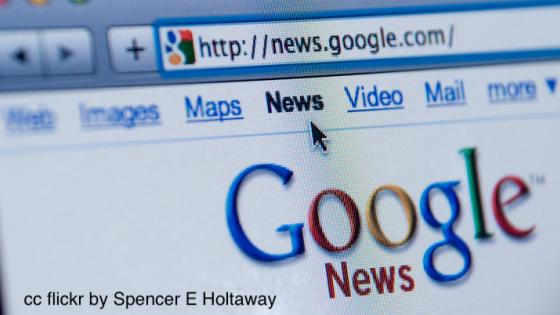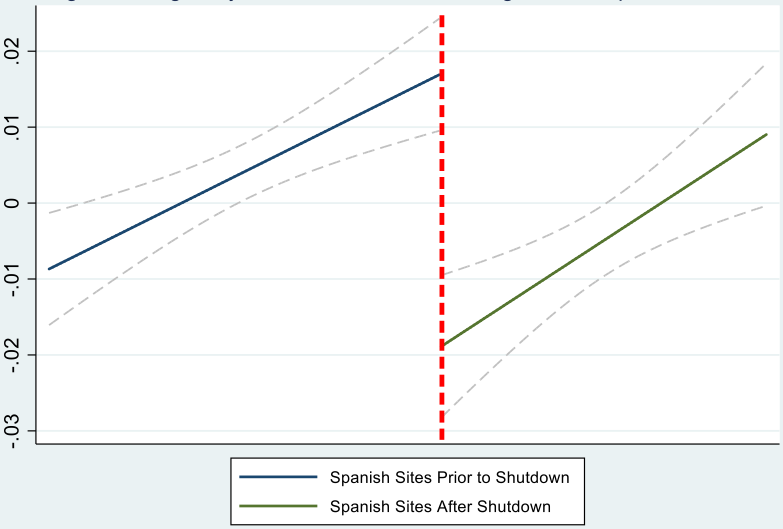On 26 March 2019, the European Parliament passed a new copyright directive to protect content creators (music industry, book publishers, news media, etc.) in the digital age. Article 15 of the directive prohibits service providers such as news aggregators from linking to news outlets or publications without the prior authorisation by the publisher.1 News aggregators – such as Google News, Yahoo! News and Bing News – are some of the most successful new players in the internet's new era, occupying top positions in terms of audience rankings. But since their introduction they have faced the opposition of news publishers, who consider aggregators as free-riders that resell their content. This controversy has motivated the amendment of copyright laws in several countries, limiting the use aggregators can make of the publishers’ content. Now, after long and fierce debates, the EU has decided to regulate these practices, and allows the creation of a ‘link tax’ that would require aggregators to pay licensing fees to publishers for using their media content.2 In the next few years, European countries will have to transpose the new directive to their own legislations. This new legal framework opens the question of whether and how national governments should design publishers’ compensation for their content.
Under the new legislation, compensation could entail government-mandated payments, negotiated payments between publishers and aggregators, or could even imply a reversal to any payment by publishers in exchange for being indexed by aggregators. To design the right compensation scheme, it is crucial to understand the impact of news aggregators on the traffic and advertisement revenue of news outlets. On the one hand, a negative effect of news aggregators on linked outlets’ traffic would support the implementation of a ‘link fee’ coordinated at the national level. On the other hand, a positive effect on traffic would advocate for allowing the parties to individually negotiate the terms of the agreement, and potentially even waive their right to any compensation.
The main forces at play
The economics literature has identified two potential types of effects news aggregators may have on news outlets (Dellarocas et al. 2013, Jeon and Nasr 2016). One positive effect is that aggregators generate indirect visits of casual readers to news outlets that otherwise would not take place, and they encourage visitors to read news stories of higher quality from several outlets (market expansion effect). But aggregators can also have negative effects on news outlets, as both sides compete directly for the direct visits of non-loyal readers, who are aware of the outlets but may prefer the aggregators’ screening capacity if they are allowed to choose (substitution effect). Although a some visitors to aggregators click on the links and visit the news outlets, not all of them do so, and those that do it do not visit the news outlets’ front page, thereby reducing their advertising revenues.
While most empirical research on this matter agrees that news aggregators increase the traffic of linked news outlets (Chiou and Tucker 2017, Athey et al. 2017, Sismeiro and Mahmood 2018), few provide direct evidence on the heterogeneity of this effect on the traffic to different types of outlets or their advertisement revenues. This information is crucial for the design of well-informed policy.
Measuring the effects of the Google News shut down in Spain
In our new study (Calzada and Gil 2019), we contribute to this debate by examining a recent dispute of Google News in Spain, which proves useful to understanding the role and heterogeneity of the impact of news aggregators on the news market.
At the beginning of 2014, a reform of the Spanish intellectual property law established that firms posting links and excerpts of news stories had to pay a compulsory link fee to the original publishers. Consequently, on 16 December 2014, Google News decided to shut down its Spanish edition, arguing that under the new regulation the service would not be profitable. We exploit this quasi-natural experiment to examine the effect of news aggregators on the number of visits received by news outlets.
Our study draws from a rich dataset obtained from SimilarWeb containing information on the daily number of visits for 50 Spanish news outlets and other outlets from France, Germany, Italy, and Portugal as a control group. We estimate the impact of the Google News shutdown by comparing the performance of Spanish news outlets before and after the shutdown of the service in Spain relative to the performance of French and Italian news outlets during the same time period (Google News in France and Italy did not experience any disruption in its service during that time). Our results show that after the shutdown, Spanish news outlets experienced a reduction in the number of daily visits of between 8% and 14%, with a growing impact during the first six weeks (see our results comparing Spanish and Italian news outlets in Figure 1 below). These findings confirm the previous work of Chiou and Tucker (2017), showing that news aggregators have a net positive impact on outlets’ traffic. They are also in line with a parallel study by Athey et al. (2017) that uses a different dataset and approach to examine this same event.
Figure 1 Log daily visits before and after the Google News Spain shutdown
Most importantly, we also find that reductions in daily visits after the shutdown are larger in lower-ranked outlets and outlets with a lower percentage of international visitors. These results are consistent with the fact that news aggregators benefit most those outlets that have low brand awareness and large brand loyalty. The shutdown affected lower-ranked outlets the most and international outlets less because they are most dependent on the flow of casual consumers generated by aggregators, and because aggregators do not compete for their relatively small base of loyal domestic visitors. Along the same lines, we also show the impact of the shutdown depends on the outlets' specialisation – sports and regional outlets experienced the largest impact, with little effect on national outlets, and no effect on business outlets.
Finally, we also consider the effect of the shutdown on advertisement revenues and advertising intensity (the frequency with which firms advertise their products in a news outlet) at the domain level. Using data from Spanish advertising consulting company ARCE Media, we show that both advertisement revenues and advertisement intensity decreased after the shutdown. This impact is weaker on front pages than content pages, which receive most traffic from news aggregators.
In summary, our results reveal that the shutdown of the Spanish edition of Google News reduced the number of daily visits to Spanish news outlets. The reduction of visits concentrated around outlets with a larger share of casual readers, such as regional and sports outlets, outlets with a low national rank and those with a relatively low internationalisation level. Niche outlets and prominent national outlets were less affected by the shutdown. These findings are relevant for antitrust authorities, regulators, and policymakers interested in the impact that the new European directive on copyright may have in the media market. If anything, these results tilt policy prescription towards allowing publishers and aggregators to negotiate their own specific terms. Finally, our findings should also be useful for publishers interested in adjusting their advertising strategies to the presence of news aggregators. Yet, future research should aim to understand the impact of aggregators on journalism ethics and standards as well as their effect on competition in the market for news.
References
Athey, S, M Mobius and J Pal (2017) “The Impact of Aggregators on Internet News Consumption,” Working Paper, Microsoft Research.
Calzada, J and R Gil (2019), “What Do News Aggregators Do? Evidence from Google News in Spain and Germany”, Marketing Science, forthcoming.
Chiou, L, and C Tucker (2017) “Content Aggregation by Platforms: The Case of the News Media,” Journal of Economics and Management Strategy 26(4): 782-805.
Dellarocas, C, Katona, Z and Rand, W M (2013) “Media, Aggregators, and the Link Economy: Strategic Hyperlink Formation in Content Networks,” Management Science, 59(10): 2360-2379.
Jeon, DS and N Nasr (2016) "News Aggregators and Competition Among Newspapers in the Internet," American Economic Journal: Microeconomics 8(4): 91–114.
Sismeiro, C and A Mahmood (2018) “Competitive Versus Complementary Effects in Online Social Networks and News Consumption: A Natural Experiment,” Management Science 64(11): 5014-5037.
Endnotes
[1] Another relevant measure in the Directive is Article 17, which establishes the actual legal responsibility of large content platforms (defined as more than 3 years old, with turnover above €10 million and more than five million unique monthly visitors) to ensure that any media uploaded does not infringe copyright. This will force platforms the use of upload filters to ensure that unlicensed copyrighted contents is not available on their website.
[2] In spite of its name, this measure will not apply to hyperlinks and uses of individual works or very short extracts of news stories.




